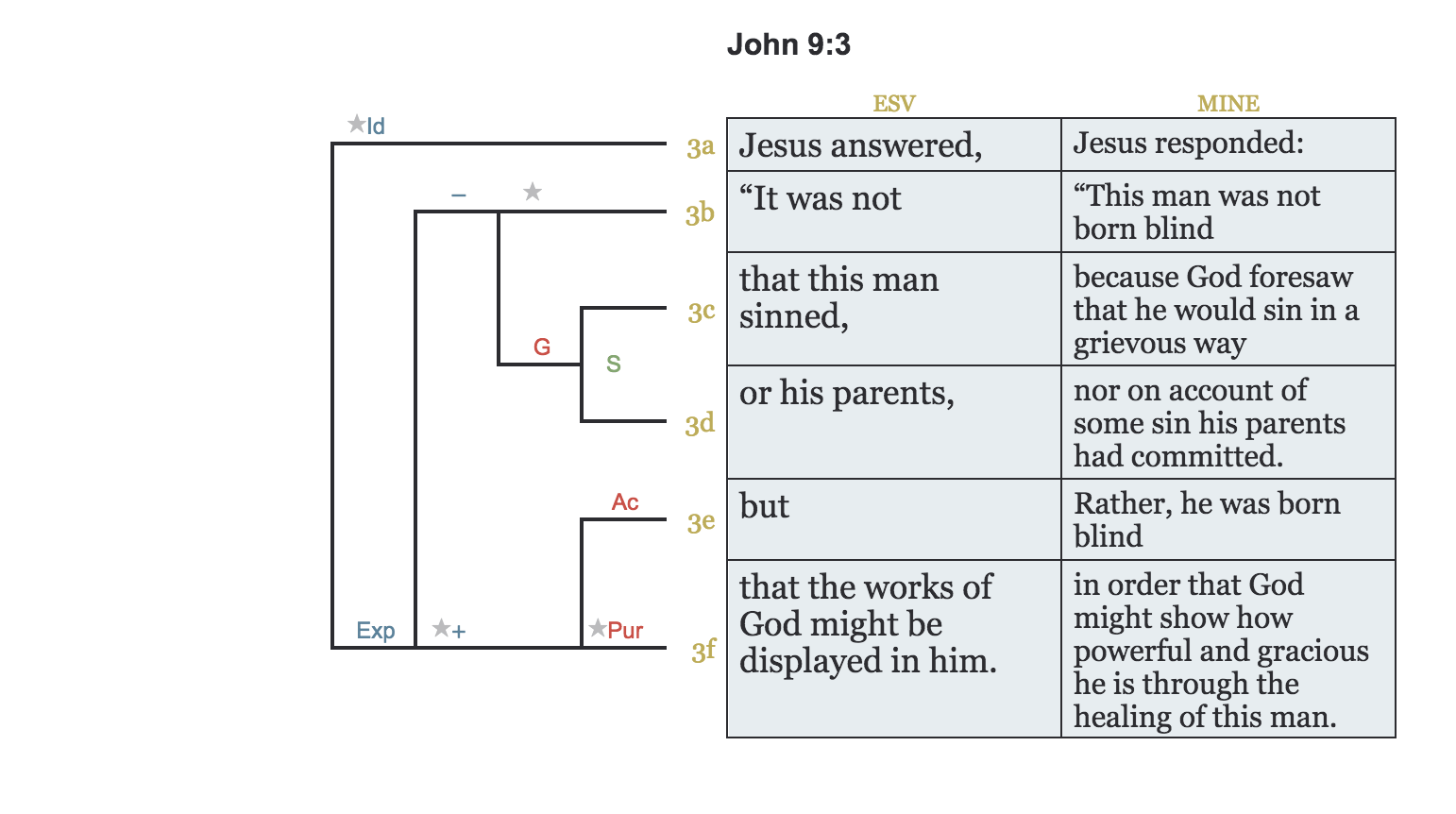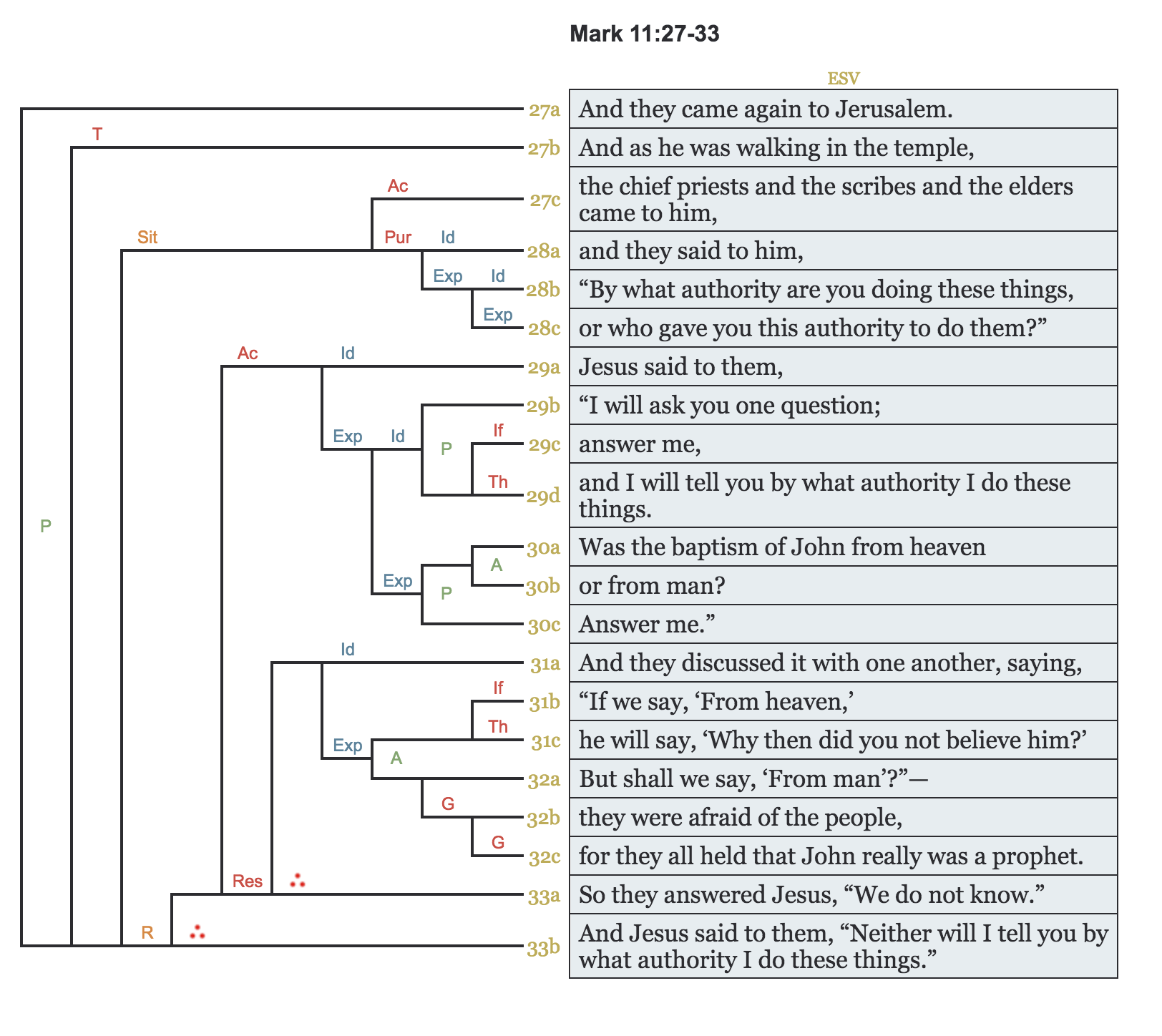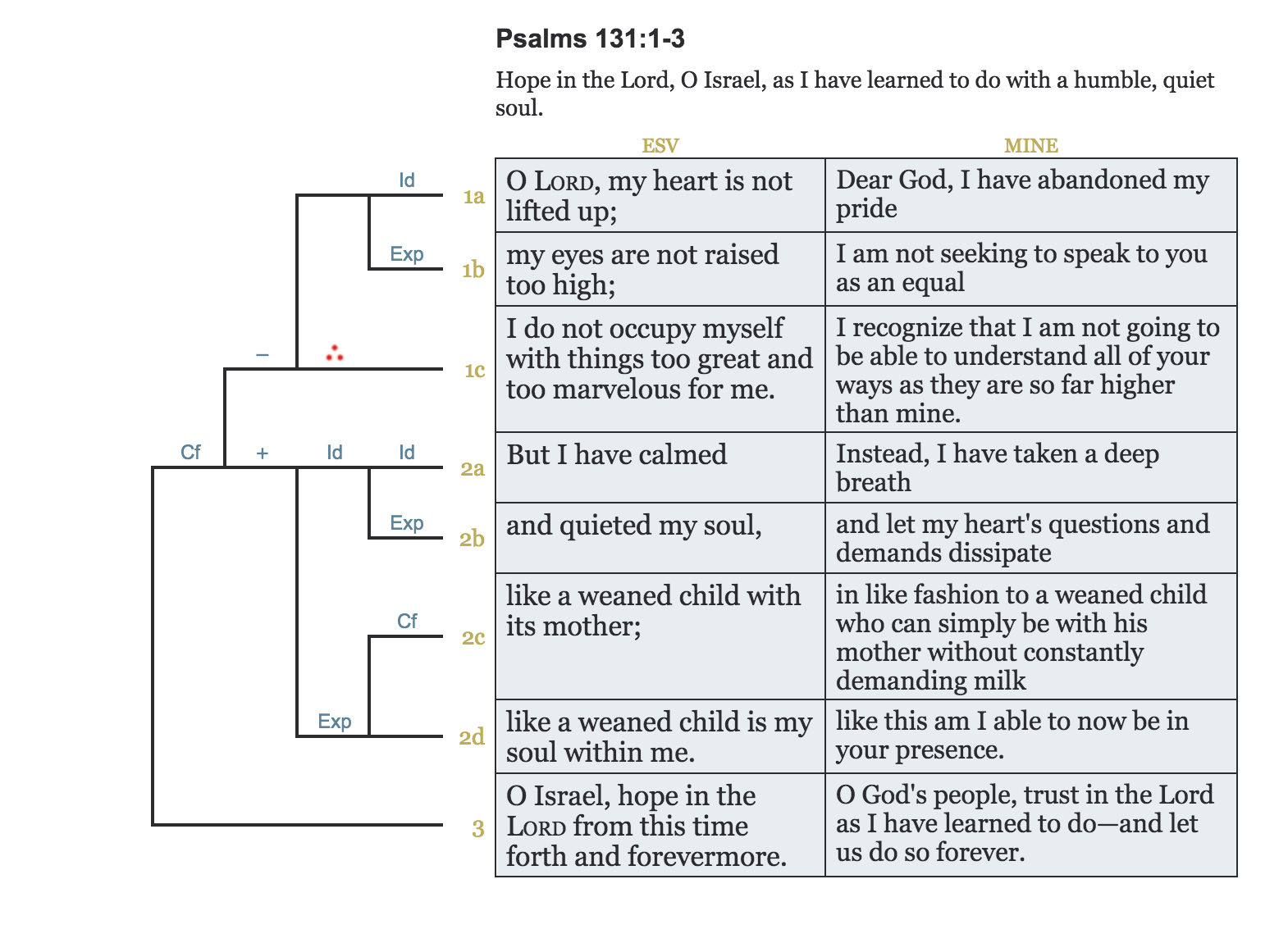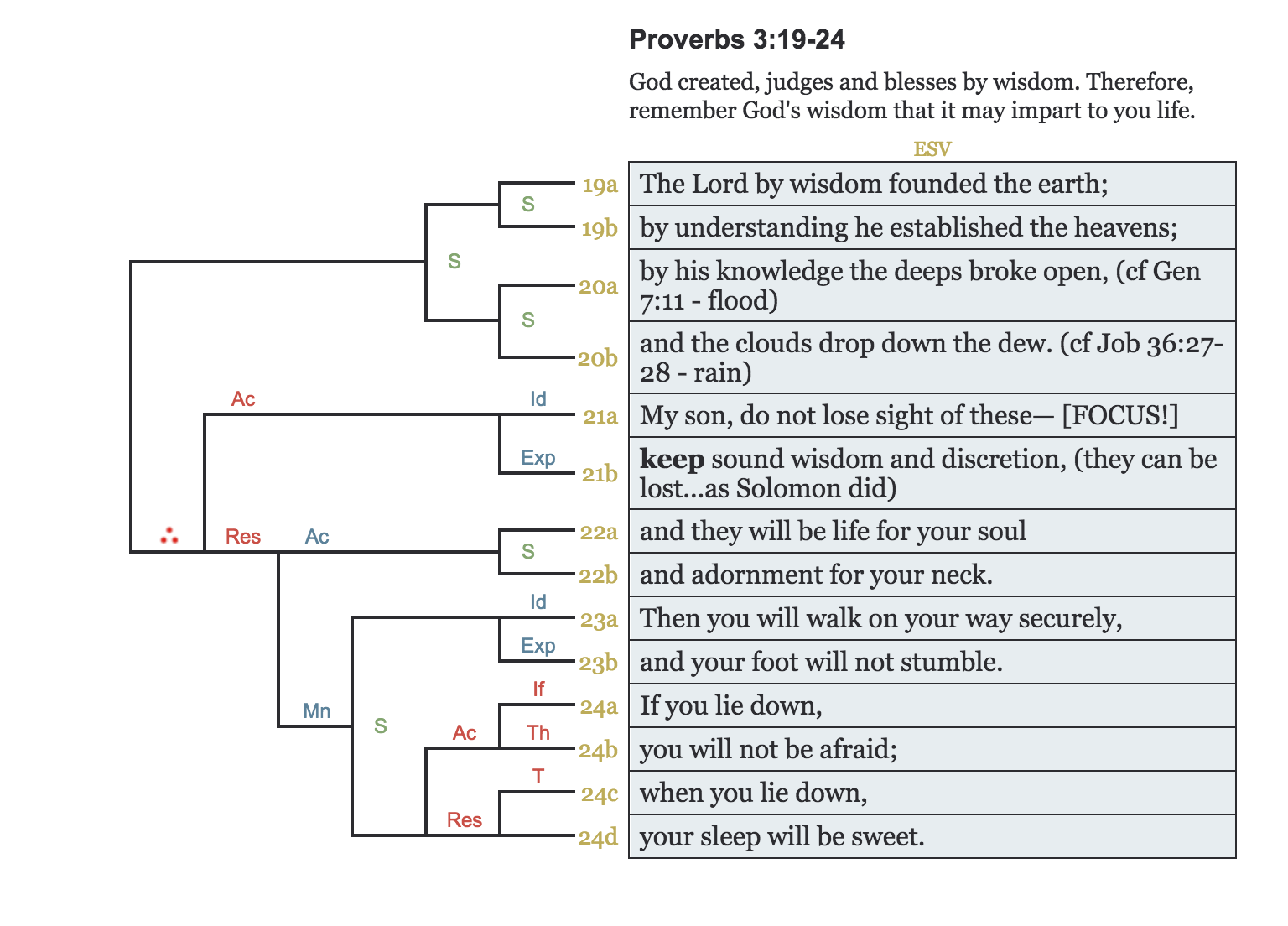Lesson 10 | Bracketing the Bible
Genres
Bracketing the epistles
Most of the examples and all the assignments in this course have come from the New Testament epistles. There are two reasons for this. First, passages in the epistles are often times shorter and therefore more conducive for an introductory course. However, moving forward, you will want to begin to branch out to longer passages as well. This can be challenging, but follows the same principles and procedures you have already learned.
The second reason we have focused on epistles is that it can feel like the most natural fit for Bracketing—a Bible study method centered upon the logic of the text. Most of the epistles use tons of conjunctions and grammatical elements loaded with logic. On the other hand, New Testament narratives and the entire Old Testament frequently progress forward without an extensive amount of explicit, linguistic, logical connectors.
Beyond the epistles
But the lack of frequent linguistic, logical connectors does not mean that these other genres do not have logic. They most certainly do, and sound doctrine depends on our discernment of this logic! For if we cannot follow the logic of a text, then we cannot see its structure and main point. Certainly we can give it a structure of our choosing and highlight our favorite verse—but that is not what we are after.
Thus, bracketing (and similar Bible study disciplines) are also incredibly useful beyond the epistles—something you have discovered via the Gospel, Psalms and Proverbs examples spread throughout in this course. Take a look at these brackets once again, noting the logic built in these genres.



